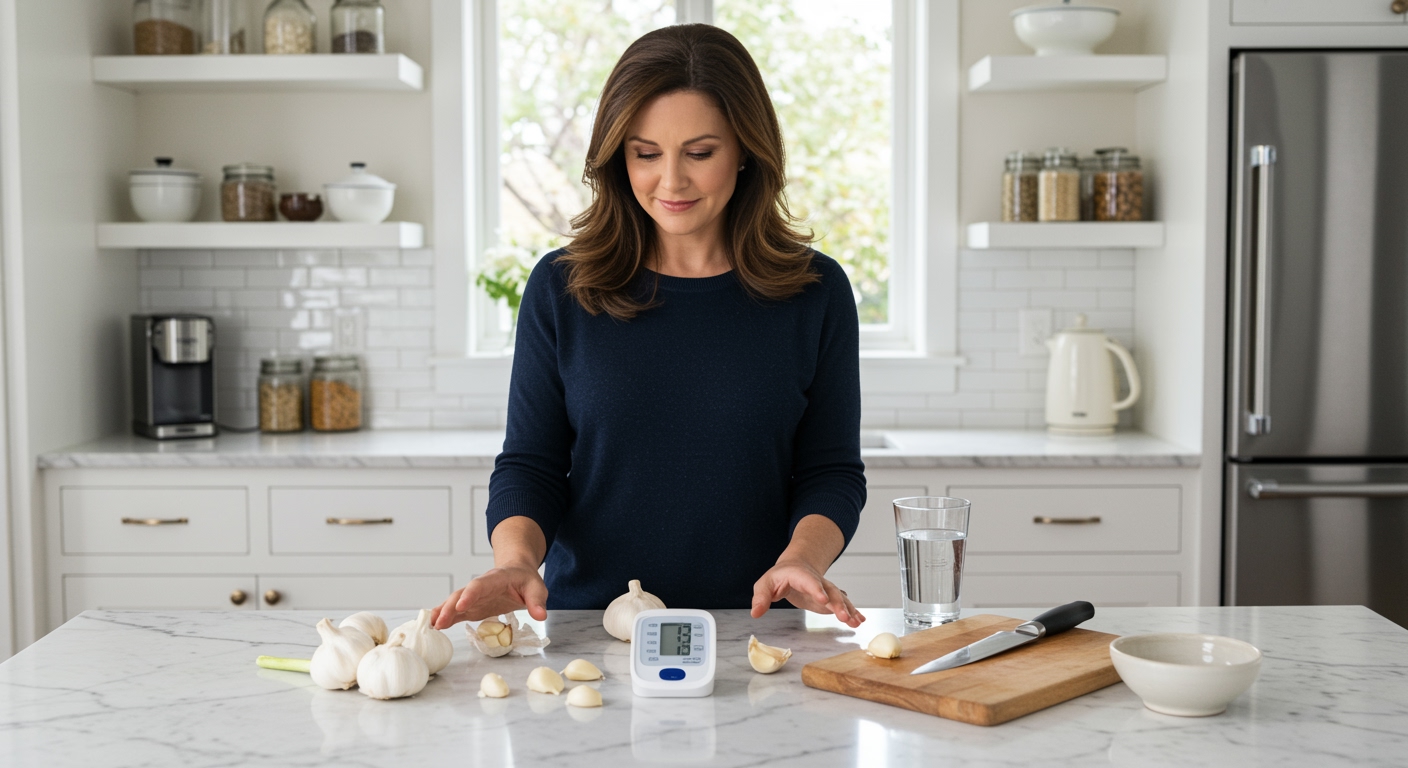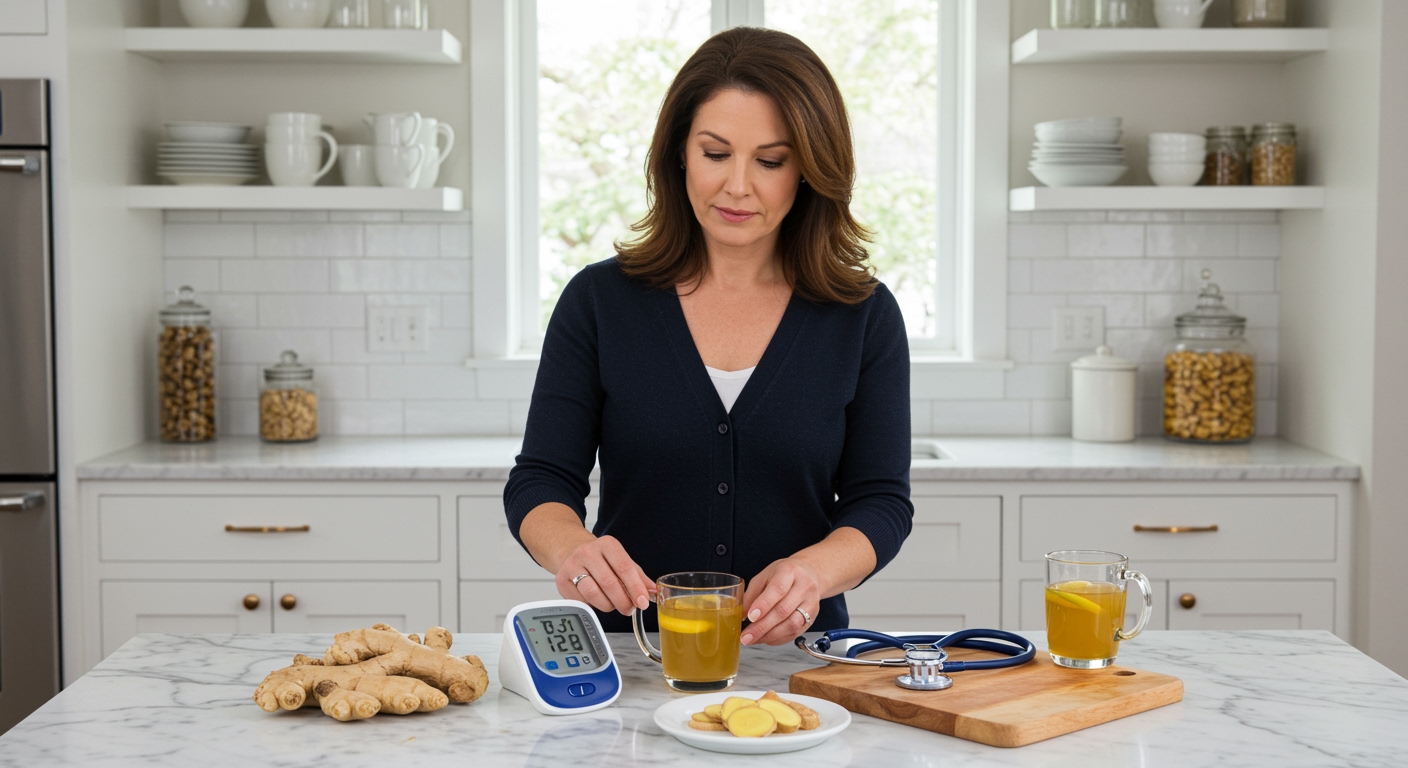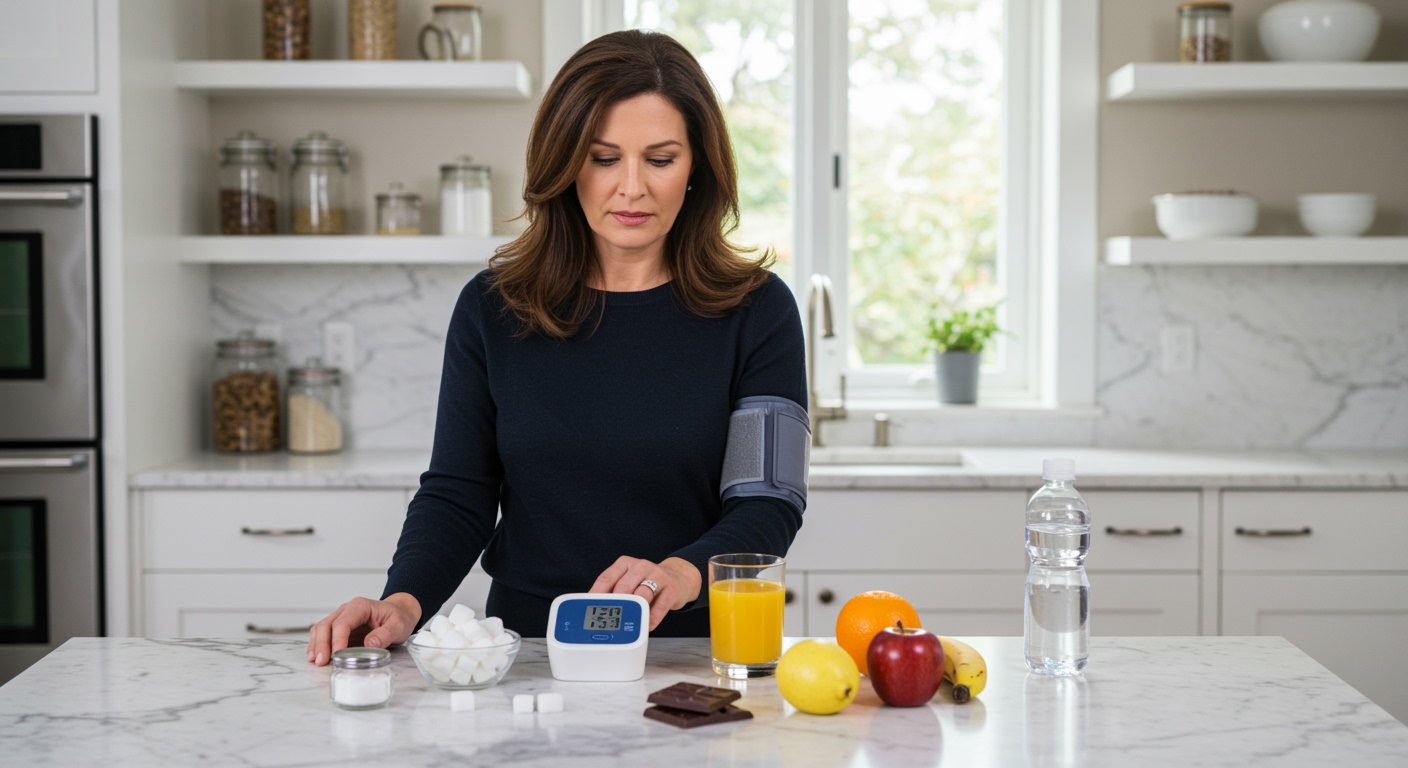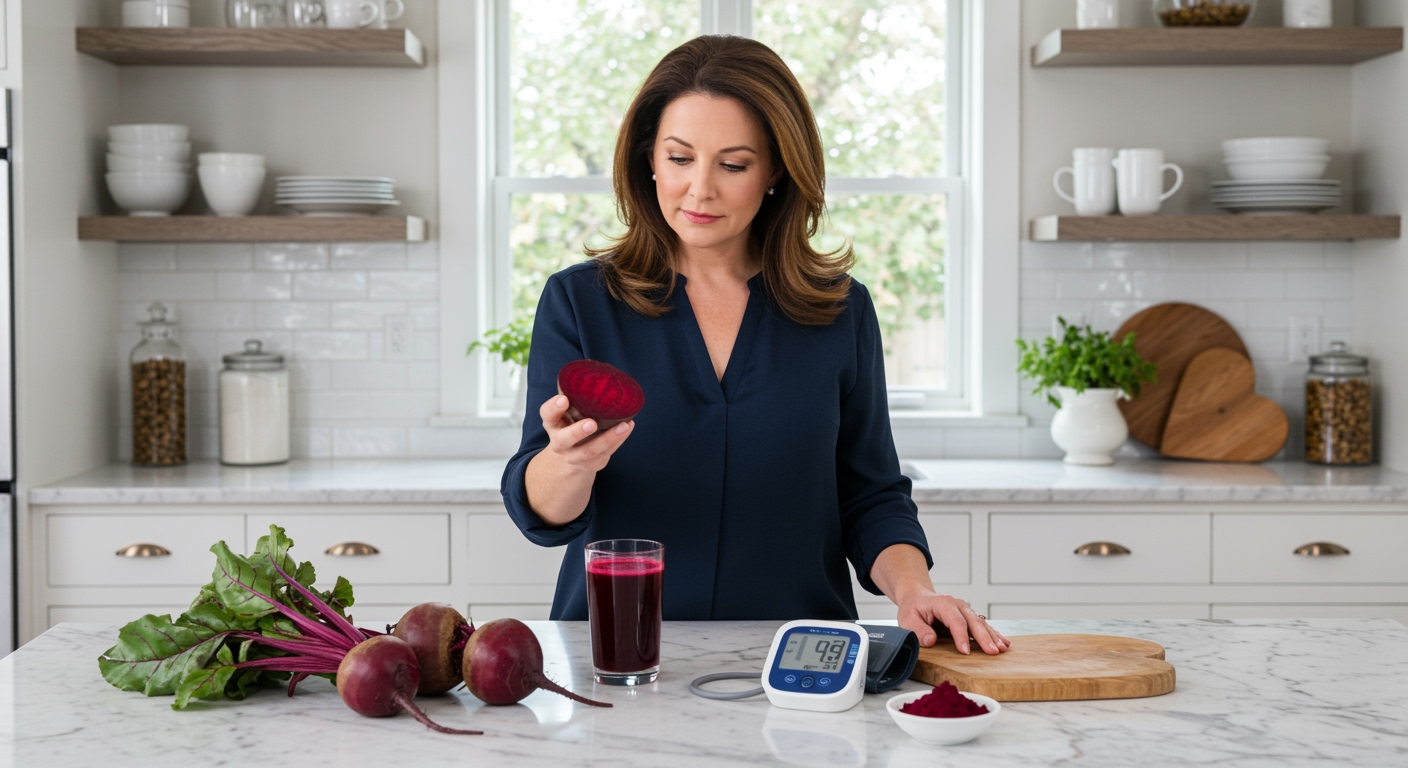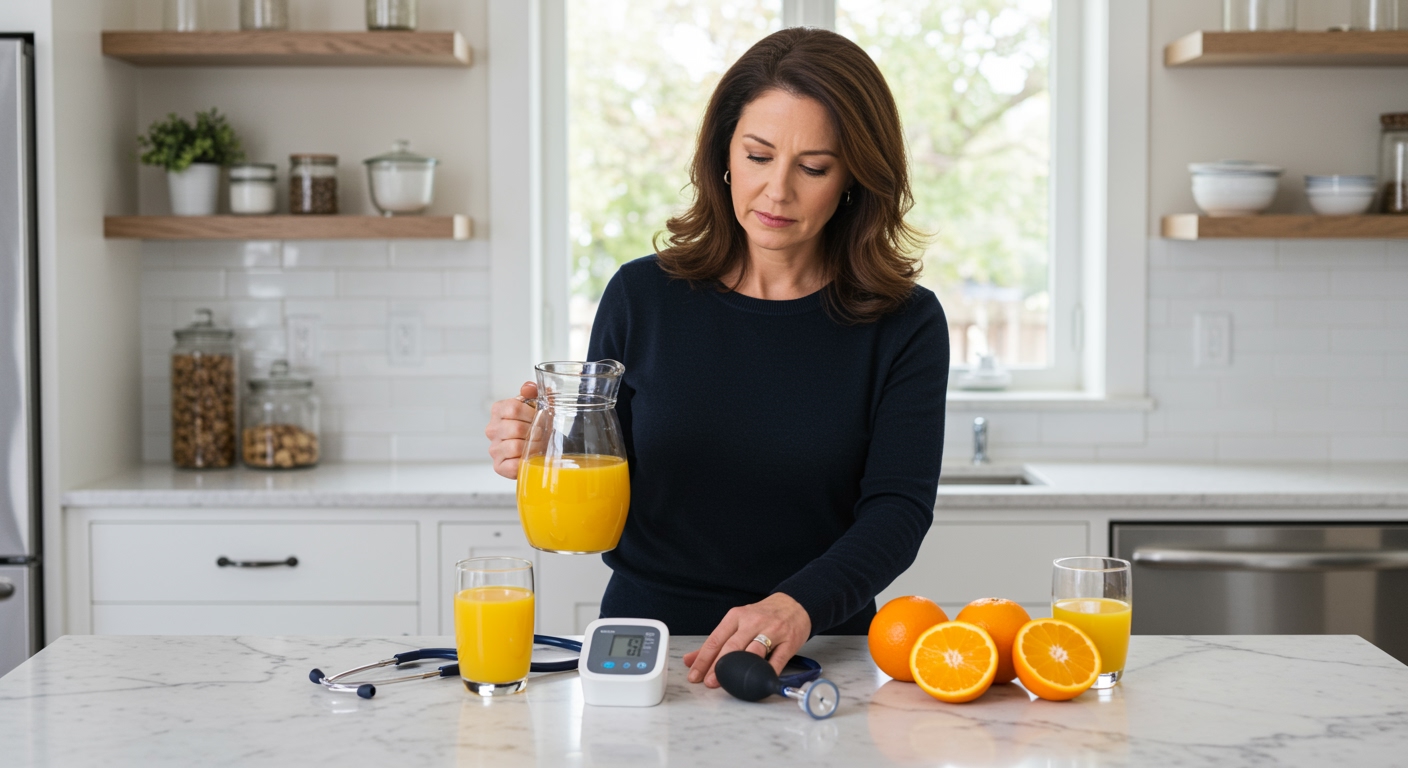✪ Key Takeaway: Garlic typically lowers blood pressure, making it potentially harmful for people with hypotension or low blood pressure conditions.
Introduction
You reach for garlic in your kitchen every day without thinking twice about its powerful effects on your cardiovascular system.
Maybe you have low blood pressure and wonder if this common ingredient could help raise it to normal levels, or perhaps you worry it might make your hypotension worse.
Hi, I’m Abdur, your nutrition coach, and today I’m going to explain exactly how garlic affects low blood pressure and whether you should include it in your daily routine.
How Does Garlic Actually Affect Blood Pressure?
Garlic contains allicin, a sulfur compound that forms when you crush or chop fresh garlic cloves.
This compound works by relaxing blood vessels and improving blood flow throughout your body.
When your blood vessels relax, they become wider, which allows blood to flow more easily and reduces the pressure against vessel walls.
Multiple studies show that garlic consistently lowers both systolic and diastolic blood pressure in people with normal or high blood pressure.
The mechanism involves inhibiting angiotensin-converting enzyme, which normally causes blood vessels to constrict and blood pressure to rise.
Garlic also increases nitric oxide production in your blood vessels, which further promotes vasodilation and improved circulation.
✪ Fact: Fresh garlic produces more allicin than aged garlic supplements or powder forms.
What Happens When You Have Low Blood Pressure?
Low blood pressure, or hypotension, occurs when your systolic pressure drops below 90 mmHg or your diastolic pressure falls under 60 mmHg.
Your brain, heart, and other vital organs need adequate blood pressure to receive enough oxygen and nutrients to function properly.
When blood pressure becomes too low, you might experience dizziness, fainting, fatigue, or confusion because your organs are not getting sufficient blood flow.
Some people naturally have low blood pressure without symptoms and live perfectly healthy lives.
However, others develop symptomatic hypotension due to dehydration, blood loss, medications, or underlying health conditions.
The key difference lies in whether your low blood pressure causes problems with daily activities and overall well-being.
✪ Note: Normal blood pressure ranges from 90/60 mmHg to 120/80 mmHg for most adults.
Should You Avoid Garlic With Low Blood Pressure?
If you have symptomatic low blood pressure, consuming large amounts of garlic could potentially worsen your condition.
The blood pressure-lowering effects of garlic might push your already low readings even further down, increasing your risk of dizziness and fainting episodes.
However, using small amounts of garlic in cooking is generally safe for most people with mild hypotension.
The problem arises when people take high-dose garlic supplements or consume excessive amounts of raw garlic thinking it will help their cardiovascular health.
Your body needs time to adjust to any significant dietary changes, and sudden increases in garlic intake can cause unpredictable blood pressure fluctuations.
Always monitor how you feel after eating garlic and reduce your intake if you notice increased dizziness or weakness.
✪ Pro Tip: Start with one small clove per day and gradually increase to assess your tolerance.
What Foods Actually Help Raise Blood Pressure?
Instead of relying on garlic, focus on foods that can help naturally increase your blood pressure to healthier levels.
Sodium-rich foods like pickles, olives, and cheese can help retain water and increase blood volume, which raises blood pressure.
Caffeine from coffee or tea provides a temporary blood pressure boost by stimulating your heart rate and constricting blood vessels.
Foods high in vitamin B12, such as eggs, fish, and dairy products, support healthy red blood cell production and improve circulation.
Staying properly hydrated with water and electrolyte-rich beverages helps maintain adequate blood volume and pressure.
Small, frequent meals prevent blood pressure drops that often occur after large meals as blood flows to your digestive system.
✪ Fact: Licorice root tea can raise blood pressure, but should be used cautiously and under medical supervision.
When Should You Talk to Your Doctor?
Consult your healthcare provider if you experience frequent dizziness, fainting, or fatigue that interferes with daily activities.
These symptoms might indicate that your low blood pressure requires medical attention rather than dietary modifications alone.
Your doctor can determine whether your hypotension stems from medications, dehydration, or underlying health conditions that need specific treatment.
Some people develop orthostatic hypotension, where blood pressure drops significantly when standing up quickly.
This condition requires professional medical management and cannot be safely addressed through dietary changes alone.
Never stop taking prescribed medications or make drastic dietary changes without discussing them with your healthcare team first.
✪ Note: Blood pressure readings below 90/60 mmHg with symptoms always warrant medical evaluation.
The Bottom Line
Garlic consistently lowers blood pressure, making it potentially problematic for people with hypotension who need to raise their blood pressure levels.
The best approach to health is understanding how foods affect your individual condition rather than following generic advice.
I would love to hear about your experiences with garlic and blood pressure, so please share your thoughts or questions in the comments below.
References
At NutritionCrown, we use quality and credible sources to ensure our content is accurate and trustworthy. Below are the sources referenced in creating this article:
- PMC: Garlic and cardiovascular disease: a critical review
- Cornell University: Can eating garlic lower your blood pressure?
- Healthline: Garlic for Blood Pressure: Does It Work?
- NCCIH: Garlic
